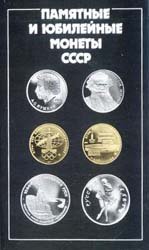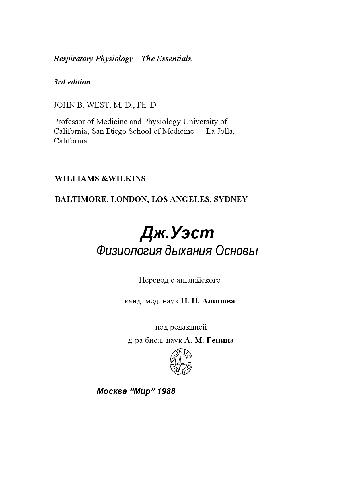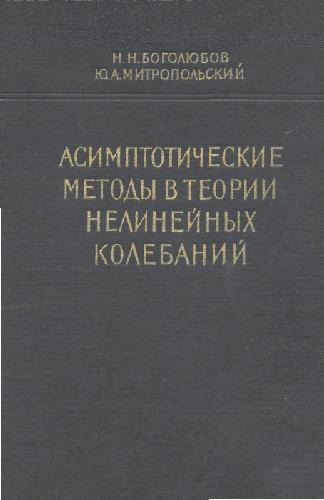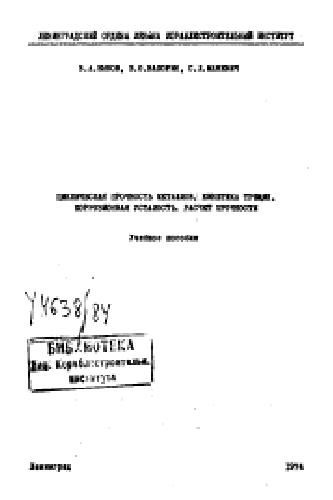- 2 402 202 книги
libcats.org






Quantum Gravity in 2+1 Dimensions (Cambridge Monographs on Mathematical Physics)
Steven CarlipWhen tackling difficult problems in physics, one of the most effective strategies is to study them in a domain or context where they appear more tractable. These strategies work best where there is a paucity of experimental data to guide the researcher through the conceptual search spaces where there is more temptation to engage in an excess of speculation. The quantization of gravity remains one of the most, if not the most difficult problem facing theoretical physicists today, and this in spite of much effort devoted to its resolution. Some researchers point to string theory as providing the correct path to quantum gravity, while others believe other less ambitious approaches show the most promise.
In this book, which to some because of its publication date may be somewhat out of date, the author takes a direct approach to quantum gravity in a context where some of its difficulties are still manifest but where computations can be done. Lowering the spatial dimension by one in general relativity gives a theory that has no local degrees of freedom. This may cause some to think that the theory is basically trivial, and deserves no further consideration, but the author reminds the reader that when the spacetime has a fundamental group that is nontrivial, there are a finite number of global degrees of freedom. If the reader is familiar with some of the work that has been done in topological quantum field theory, the absence of physical degrees of freedom does not entail an uninteresting theory (both in physics and mathematics).
Early on in the book, the author gives evidence as to the value in studying gravity in 2+1 dimensions, such as the fact that its point particle solutions are useful in the study of cosmic strings. But physical theories are very dependent on distance, as the discovery of quantum mechanics readily attests to. The cosmic strings the author discusses are entities that exist in the Newtonian limit of the (2+1)-dimensional theory. The physics at this scale (of "large" distances) is to be contrasted with the scales at which quantum gravity is thought to be relevant. Cosmic strings are not meaningful entities at these (very short) distances.
Classical physics is thought to be better understood than the physics of the quantum realm, and so frequently physicists undertake a study of quantum phenomena by first investigating thoroughly what happens in the classical domain. The author does not deviate from this strategy, and early on in the book he takes up the study of the classical solutions of the Einstein field equations for (2+1)-dimensional general relativity. Since the dimension of space has been lowered by 1, one might expect that there would be a plethora of exact solutions to the Einstein field equations or at least ones that are somewhat easier to find than in the usual case. An immediate issue that arises concerns the topology of the manifold, and the author approaches this first asking what three-manifolds will admit Lorentzian metrics and which manifolds admit solutions of the empty space Einstein field equations, i.e. which three-manifolds admit flat Lorentzian metrics. An interesting conclusion resulting from this discussion is that changes in topology are not permitted by the field equations, at least for the case of spatially closed three-dimensional manifolds.
Doing calculations in general relativity while respecting the unity of space and time is extremely difficult, and what is frequently done is to divide spacetime into spatial and temporal directions. One methodology for doing this is the Arnowitt-Deser-Misner (ADM) formalism, which is given detailed treatment in the book. The ADM formalism allows one to use the Hamiltonian formalism in (2+1)-dimensional gravity, and this results in a dynamical system with constraints. The author wants to interpret these constraints using an analog of what is done in a gauge theory, namely to interpret them as generators of infinitesimal gauge transformations, even though gravity is not a gauge theory. He shows explicitly that this can be done with the momentum constraints, but the Hamiltonian constraint is more problematic. This constraint generates diffeomorphisms in the time direction but "on-shell", i.e. subject to the dynamical equations of motion. But the author goes on to how diffeomorphisms can be represented as gauge transformations in (2+1)-dimensional gravity, i.e. in this case the full diffeomorphism group can be replaced by the group of pointwise gauge transformations. This makes the quantization procedure much more straightforward the author says.
And after a few more chapters of studying the classical dynamics of (2+1)-dimensional gravity, the author gets to this quantization using the ADM formalism and the York time-slicing operation (the latter is a procedure wherein spacetime is given a "foliation" by surfaces with constant mean extrinsic curvature). This strategy allows one to reduce (2+1)-dimensional gravity to a purely quantum-mechanical system with a finite number of degrees of freedom. This is astonishing at first glance, and also quite helpful since it allows the author to use the familiar tools of quantum mechanics to quantize gravity. His discussion is interesting not only because of its importance to the subject of quantum gravity, but also because of the presence of various constructions from mathematics, such as the mapping class group and automorphic functions. The presence of these functions is due to the author's choice of a torus for the spatial part of spacetime. The Schrodinger equation then involves a Hamiltonian that can be written in terms of the "Maass Laplacian", the latter of which acts on the automorphic functions. The author however shows that this quantization procedure is not unique, with many choices of Hamiltonian possible, and each of these leading to physically inequivalent theories.
This non-uniqueness in quantization procedures leads the author to consider, based on his study of the classical dynamics of (2+1)-gravity earlier in the book, alternative approaches to quantization. One of these alternatives is the viewing of the classical dynamics in terms of the geometry of flat connections. Rather than studying the evolution of the spatial geometry as done in the ADM formalism, this approach studies the evolution of the entire spacetime, and gives, as the author puts it, a kind of "Heisenberg picture" for the quantum dynamics (as compared with the "Schrodinger picture") of the ADM formalism. The quantization of the space of geometric structures (with nondegenerate metrics) is then carried out, interestingly without any need for a Hamiltonian. He also discusses how to proceed with the assumption of nondegeneracy of the metric, leading to the famous Ashtekar variables so widely used in some research circles in quantum gravity. Further analysis in a more general context, where the canonical quantization procedure of replacing Poisson brackets by commutators is replaced by a general operator algebra of holonomies leads the author to discuss the Nelson/Regge approach to quantization and its "dual": the famous Ashtekar loop representation.
In this book, which to some because of its publication date may be somewhat out of date, the author takes a direct approach to quantum gravity in a context where some of its difficulties are still manifest but where computations can be done. Lowering the spatial dimension by one in general relativity gives a theory that has no local degrees of freedom. This may cause some to think that the theory is basically trivial, and deserves no further consideration, but the author reminds the reader that when the spacetime has a fundamental group that is nontrivial, there are a finite number of global degrees of freedom. If the reader is familiar with some of the work that has been done in topological quantum field theory, the absence of physical degrees of freedom does not entail an uninteresting theory (both in physics and mathematics).
Early on in the book, the author gives evidence as to the value in studying gravity in 2+1 dimensions, such as the fact that its point particle solutions are useful in the study of cosmic strings. But physical theories are very dependent on distance, as the discovery of quantum mechanics readily attests to. The cosmic strings the author discusses are entities that exist in the Newtonian limit of the (2+1)-dimensional theory. The physics at this scale (of "large" distances) is to be contrasted with the scales at which quantum gravity is thought to be relevant. Cosmic strings are not meaningful entities at these (very short) distances.
Classical physics is thought to be better understood than the physics of the quantum realm, and so frequently physicists undertake a study of quantum phenomena by first investigating thoroughly what happens in the classical domain. The author does not deviate from this strategy, and early on in the book he takes up the study of the classical solutions of the Einstein field equations for (2+1)-dimensional general relativity. Since the dimension of space has been lowered by 1, one might expect that there would be a plethora of exact solutions to the Einstein field equations or at least ones that are somewhat easier to find than in the usual case. An immediate issue that arises concerns the topology of the manifold, and the author approaches this first asking what three-manifolds will admit Lorentzian metrics and which manifolds admit solutions of the empty space Einstein field equations, i.e. which three-manifolds admit flat Lorentzian metrics. An interesting conclusion resulting from this discussion is that changes in topology are not permitted by the field equations, at least for the case of spatially closed three-dimensional manifolds.
Doing calculations in general relativity while respecting the unity of space and time is extremely difficult, and what is frequently done is to divide spacetime into spatial and temporal directions. One methodology for doing this is the Arnowitt-Deser-Misner (ADM) formalism, which is given detailed treatment in the book. The ADM formalism allows one to use the Hamiltonian formalism in (2+1)-dimensional gravity, and this results in a dynamical system with constraints. The author wants to interpret these constraints using an analog of what is done in a gauge theory, namely to interpret them as generators of infinitesimal gauge transformations, even though gravity is not a gauge theory. He shows explicitly that this can be done with the momentum constraints, but the Hamiltonian constraint is more problematic. This constraint generates diffeomorphisms in the time direction but "on-shell", i.e. subject to the dynamical equations of motion. But the author goes on to how diffeomorphisms can be represented as gauge transformations in (2+1)-dimensional gravity, i.e. in this case the full diffeomorphism group can be replaced by the group of pointwise gauge transformations. This makes the quantization procedure much more straightforward the author says.
And after a few more chapters of studying the classical dynamics of (2+1)-dimensional gravity, the author gets to this quantization using the ADM formalism and the York time-slicing operation (the latter is a procedure wherein spacetime is given a "foliation" by surfaces with constant mean extrinsic curvature). This strategy allows one to reduce (2+1)-dimensional gravity to a purely quantum-mechanical system with a finite number of degrees of freedom. This is astonishing at first glance, and also quite helpful since it allows the author to use the familiar tools of quantum mechanics to quantize gravity. His discussion is interesting not only because of its importance to the subject of quantum gravity, but also because of the presence of various constructions from mathematics, such as the mapping class group and automorphic functions. The presence of these functions is due to the author's choice of a torus for the spatial part of spacetime. The Schrodinger equation then involves a Hamiltonian that can be written in terms of the "Maass Laplacian", the latter of which acts on the automorphic functions. The author however shows that this quantization procedure is not unique, with many choices of Hamiltonian possible, and each of these leading to physically inequivalent theories.
This non-uniqueness in quantization procedures leads the author to consider, based on his study of the classical dynamics of (2+1)-gravity earlier in the book, alternative approaches to quantization. One of these alternatives is the viewing of the classical dynamics in terms of the geometry of flat connections. Rather than studying the evolution of the spatial geometry as done in the ADM formalism, this approach studies the evolution of the entire spacetime, and gives, as the author puts it, a kind of "Heisenberg picture" for the quantum dynamics (as compared with the "Schrodinger picture") of the ADM formalism. The quantization of the space of geometric structures (with nondegenerate metrics) is then carried out, interestingly without any need for a Hamiltonian. He also discusses how to proceed with the assumption of nondegeneracy of the metric, leading to the famous Ashtekar variables so widely used in some research circles in quantum gravity. Further analysis in a more general context, where the canonical quantization procedure of replacing Poisson brackets by commutators is replaced by a general operator algebra of holonomies leads the author to discuss the Nelson/Regge approach to quantization and its "dual": the famous Ashtekar loop representation.
Ссылка удалена правообладателем
----
The book removed at the request of the copyright holder.
----
The book removed at the request of the copyright holder.
Популярные книги за неделю:
#2

В.Бекетов, К.Харченко. Измерения и испытания при конструировании и регулировке радиолюбительских антенн (djvu)
4.82 Mb
#4

Самодельные детали для сельского радиоприемника
Авторы: З.Б.Гинзбург, Ф.И.Тарасов.Категория: радиоэлектроника
1.40 Mb
Только что пользователи скачали эти книги:
#4

Памятные и юбилейные монеты СССР. Каталог
Ганичев С.И., Юров А.В., Мочалов И.А., Голяшева Н.С., Кукушкина Е.Н.Категория: hobby
6.25 Mb
#5

Физиология дыхания
Дж. УэстКатегория: 2208513-Библиотека анестезиология, реанимация, интенсивная терапия, ск, 1-2, Физиология и кардиология для анестезиологов, Физиология для анестезиологов
2.32 Mb
#7

Асимптотические методы в теории нелинейных колебан
БоголюбовКатегория: 2319748-Сборник книг для физиков #4, Теор.колебаний
15.90 Mb
#8

Циклическая прочность металлов, кинетика трещин. Коррозионная усталость и расчет прочности
Быков, Вакорин, МаневичКатегория: 1003605-Судостроение
1.02 Mb











